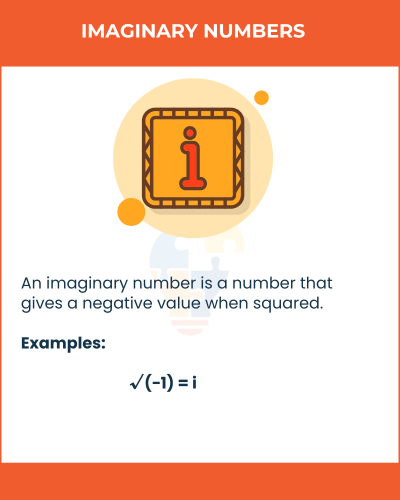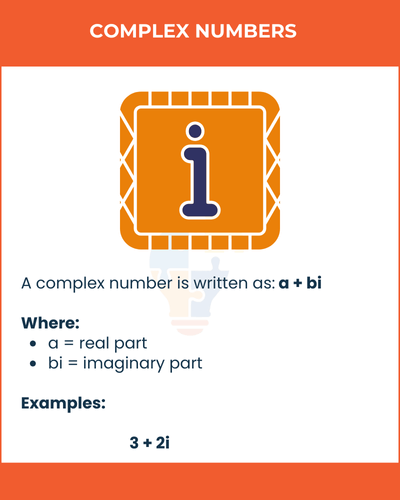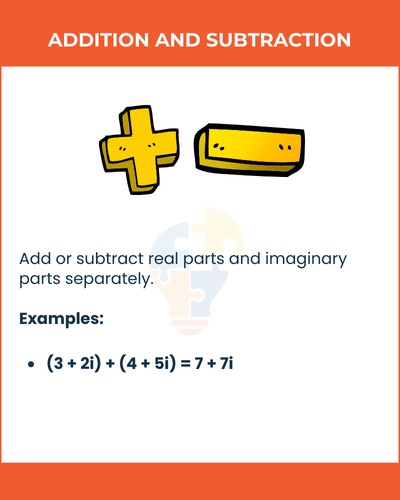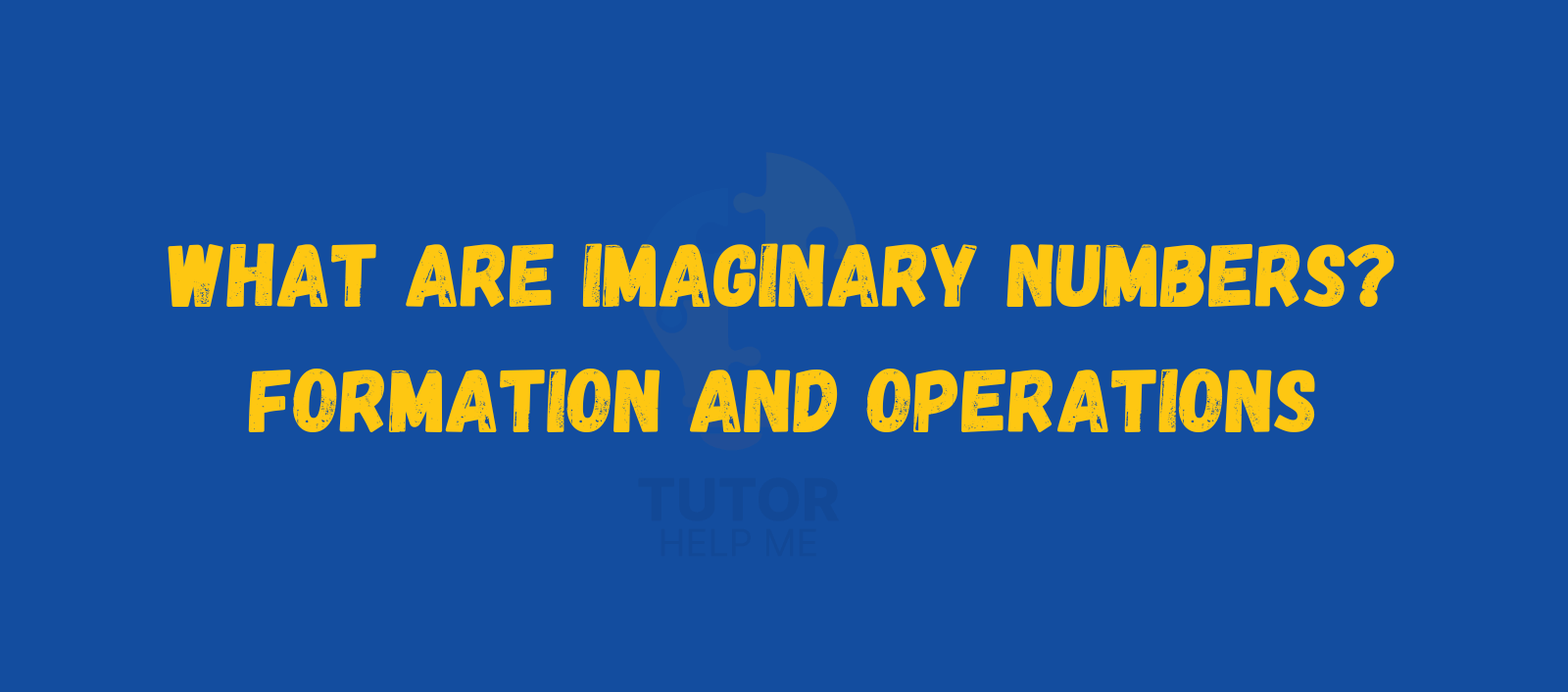Imaginary numbers sound unusual, but they are very important in mathematics. They allow us to solve problems that real numbers cannot.
This blog explains what imaginary numbers are, how they are formed, their rules, and how they are used in real life. With examples and simple explanations, you will understand why imaginary numbers matter in maths, engineering, and science.
Let’s begin with the basics.
What Are Imaginary Numbers?
An imaginary number is a number that gives a negative value when squared.
In other words, imaginary numbers deal with the square root of negative numbers.
For example:
√(−1) = i
Here, i is called the imaginary unit.

"Get success in maths with our 1-on-1 online maths tutors."
Fundamental Property of Imaginary Numbers
Imaginary numbers follow special rules.
1) The Imaginary Unit (i)
- Defined as: i = √(−1)
- This is the base of all imaginary numbers.
2) Square of an Imaginary Number
- i² = −1
- i³ = −i
- i⁴ = 1
- Then the cycle repeats.
Formation and Operations of Imaginary Numbers
Imaginary numbers often combine with real numbers to form complex numbers.
1 Complex Numbers
A complex number is written as:
a + bi
Where:
- a = real part
- bi = imaginary part
Example: 3 + 2i

2 Addition and Subtraction
Add or subtract real parts and imaginary parts separately.
Example:
(3 + 2i) + (4 + 5i) = 7 + 7i

3 Multiplication
Multiply like algebra, remembering that i² = −1.
Example:
(2 + 3i)(4 + 5i) = 8 + 10i + 12i + 15i²
= 8 + 22i − 15
= −7 + 22i

What Are the Rules of Imaginary Numbers?
- i = √(−1)
- i² = −1
- i³ = −i
- i⁴ = 1 (cycle repeats)
- Add or subtract by combining like terms
- Multiply using distributive law, replace i² with −1
Applications of Imaginary Numbers
Imaginary numbers are not just theory, they are very useful.
1) Solving Equations
Some quadratic equations have no real solutions. Imaginary numbers provide answers.
Example: x² + 1 = 0 → x = ±i
2) Fundamental Theorem of Algebra
This theorem states that every polynomial equation has a solution, which may be real or complex.
Imaginary numbers ensure this is always true.
3) Engineering and Physics
Imaginary numbers are used in:
- Electrical circuits (AC currents)
- Quantum mechanics
- Signal processing
- Vibration analysis
They help describe waveforms, rotations, and oscillations.
“Book a free assessment for maths tutoring.”
Do Imaginary Numbers Really Exist?
Imaginary numbers do not “exist” in the same way as real numbers, but they are tools.
They represent concepts that cannot be explained with real numbers alone.
In science and engineering, they give practical results.
Why Do We Have Imaginary Numbers Anyway?
Mathematicians introduced imaginary numbers to solve equations with negative square roots.
Without them, many advanced concepts in maths, physics, and engineering would be impossible.
Imaginary numbers make mathematics complete.
Examples of Imaginary Numbers
- i = √(−1)
- 2i, −3i, 5i
- Complex numbers like 4 + 6i
Difference Between Real and Imaginary Numbers
| Feature | Real Numbers | Imaginary Numbers |
|---|---|---|
| Can be Plotted | On number line | On complex plane |
| Square | Positive | Negative |
| Examples | 2, −5, 3.5 | i, 2i, −7i |
Conclusion
Imaginary numbers expand mathematics beyond real numbers. They are based on the imaginary unit i, where i² = −1.
By combining with real numbers, they form complex numbers, which are essential in solving equations, engineering problems, and physics applications.
Though called “imaginary,” they are very real in their impact. Understanding imaginary numbers builds a strong foundation for advanced maths and scientific study.
FAQs
Q1. What is an imaginary number?
An imaginary number is based on √(−1), represented as i.
Q2. What is i equal to?
i = √(−1).
Q3. What is i²?
i² = −1.
Q4. What is a complex number?
A complex number is written as a + bi.
Q5. Can imaginary numbers be negative?
Yes, imaginary numbers can be negative, like −3i.
Q6. Are imaginary numbers real?
They are not real numbers but are used in real applications.
Q7. Why are imaginary numbers important?
They solve equations with negative roots and are used in science.
Q8. Where are imaginary numbers used?
In circuits, quantum mechanics, and signal processing.
Q9. Who invented imaginary numbers?
They were introduced by mathematicians in the 16th century.
Q10. What is the square of i?
The square of i is −1.

